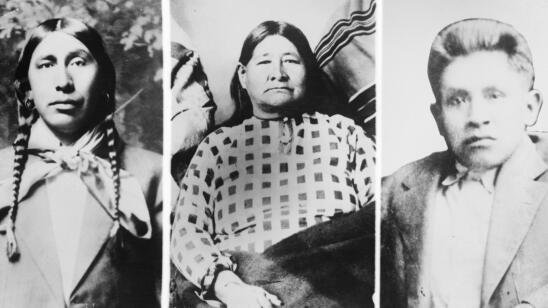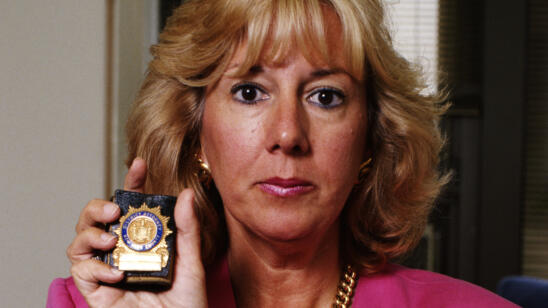Plum Sykes at the Party Girls Die in Pearls book launch at Burberry Houston at The Galleria on May 15, 2017 in Houston, Texas.
British “It Girl” Plum Sykes is the author of the new lighthearted suspense novel Party Girls Die in Pearls: An Oxford Girl Mystery (HarperCollins). She talks about how mystery novels don’t always have to be super dark, what it’s like to work at Vogue, and the allure of floppy-haired British boys.
RC: Why did you decide to write a mystery?
Sykes: I wanted to do another social-commentary kind of novel, one set in Oxford, but I thought that I needed to add another element. And, since I actually love Agatha Christie, I thought why not do social commentary via murder mystery?
RC: The book is set in 1985 at Oxford University. That’s your alma mater, correct?
Sykes: Yes, although I actually graduated in ’91. I wanted to set it earlier because the clothes were more extreme and I wanted to highlight the difference between the formality of what they wear in college compared to what the American student brings to school. One reason I put lots of clothes in the book is it really sets the scene. If we say, “She was wearing baggy stonewashed jeans,” (which are so hideous) then we know the time frame.
RC: How much is the book inspired by your college years?
Sykes: It’s different now because there’s more diversity. In the ’80s, it was completely male-dominated (70 percent men to 30 percent women). And, among teachers, I never had a female tutor in my entire time there. If you take the idea of the English, old-school-tie, gentlemen’s-club type and then you add in the kind of people who could get in to university — mostly they were pretty wealthy. So, the whole university was stuffed with really posh people —overflowing! Or if they weren’t, they pretended to be.
RC: Was it hard to recreate the ’80s?
Sykes: It was so that moment when it was all about Princess Diana and Sloane rangers. And Brideshead Revisited on TV had a huge impact on young people in the U.K. All the boys wanted to be that floppy-haired boy. Also, the movie Chariots of Fire was set at Cambridge University. For inspiration about the makeup and hair, I spoke to Amy Astley, who was the editor-in-chief of Teen Vogue, about all the colors of lipstick and eyeshadow you would have worn then. For the fashions, I spoke to a lot of fashion people about what my characters would have been wearing at the time. The American girl Nancy is that trendy New York-Norma Kamali-Charivari type.
RC: Your mystery-writing style has a much lighter tone than some of what’s out there now.
Sykes: It’s not Scandi-noir for one minute. But if you go back to the golden age of crime fiction in the 1930s and ’40s, that’s Agatha Christie, and some other writers around that time such as Francis Iles, who wrote the book Before the Fact in the 1930s (it was adapted into the Hitchcock movie Suspicion). The story is not really about the murder, but about the class differences. Christie’s Sparkling Cyanide opens at a posh party. It’s all about that world. You’re following that thread of murder while reading about glamorous people going to the Ritz and drinking champagne. I love showing everyone’s idea of the fabulous life–but there’s a dark side. These books are definitely “death on the tennis court.” It’s not going to be Girl On the Train—dark, dark, dark. I’m doing the escapism, instead. Putting the murder in gives the book that Nancy Drew and Agatha Christie quality plus a little bit of Clueless. I do think there’s a female reader out there who doesn’t want everything to be so dark.
RC: What has it been like to work at Vogue? And what is Anna Wintour like?
Sykes: I’m a Vogue contributing editor. I absolutely love working there; it’s one of the most amazing parts of my life. They like sending me to interview stars like Rihanna and Lupita Nyong’o –they love this thing of mixing up. It makes it more fun to send this straight, British, white lady to do the interviews. And, as for Anna Wintour—she is absolutely brilliant. Everyone asks and I don’t mind talking about it at all. I think she is one of the most brilliant managers of people ever. That’s why people stay so long once they get to Vogue — no one leaves — she doesn’t micromanage anyone. She gives you a story and says “See you in three weeks.” Other places, there were always lots of meetings before you got a yes or a no. With Anna, you get a yes or no within three seconds. But it’s so much easier to do your job if you know where you stand. Obviously, with Anna it’s more nos than yeses… I’m still so intimidated by her even after all this time.
RC: Is Party Girls the first in a series?
Sykes: Definitely. And I should have started the next one already, but I haven’t. I thought I’d be able to start in January, but I have been working on promotional stuff for this book.
RC: I loved the footnotes throughout—about Oxford traditions and ’80s pop culture.
Sykes: I wanted the footnotes to be informative but kind of fun. I got the idea because I was in Oxford a lot doing research for the book. I read a lot of the old school newspaper [the Cherwell] and I came across a book of theses the students had written. There were lots of footnotes. I thought, “Why not make it look more academic, like a graduate thesis?” Being in magazines, I quite like it when the text is broken up more by different type… I knew there were a lot of things that have to be explained and I didn’t want a lot of exposition. The footnote is only for the person who doesn’t know about the place. You don’t have to read it, if you do know.
RC: Is your heroine Ursula Flowerbutton autobiographical?
Sykes: Basically, her character arc is that of Cinderella. She starts sweetly like a Beatrix Potter character. She doesn’t realize how lovely or charming she is. She needed to be a bit of a country mouse with one nice dress. It’s a bit of a butterfly story: By borrowing from Nancy who has hundreds of dresses, Ursula’s style grows and her personality grows, too. My daughter is called Ursula. The Ursula character is very autobiographical because I was that very shy, naïve, slightly innocent wide-eyed girl. I went to a lot of those Oxford parties and couldn’t believe I was in those ballgowns every day. But, I haven’t witnessed a murder.
RC: Mystery author Sophie Hannah has recently done versions of Agatha Christie’s Hercule Poirot books. Would you ever take on a Christie character?
Sykes: Maybe I could touch the young Miss Marple. That would actually be very funny, as one reviewer did say my book is “Miss Marple, Junior.” Miss Marple books are set in the 1920s —that would be a lot of fun researching the clothes.
A&E’s True Crime gets closer to the people and the stories behind the crime headlines.
(Image: Bob Levey/Getty Images for Burberry)


